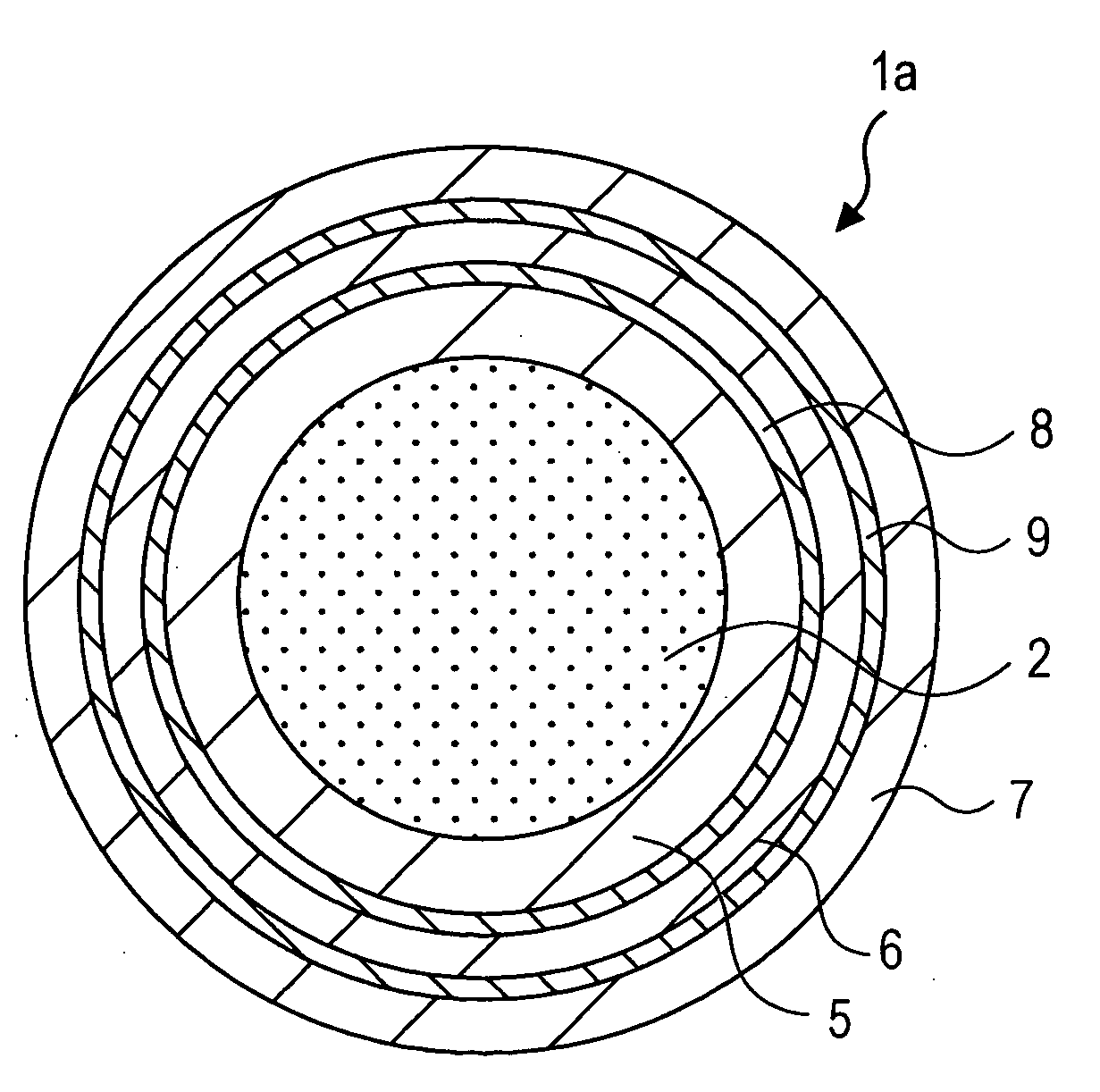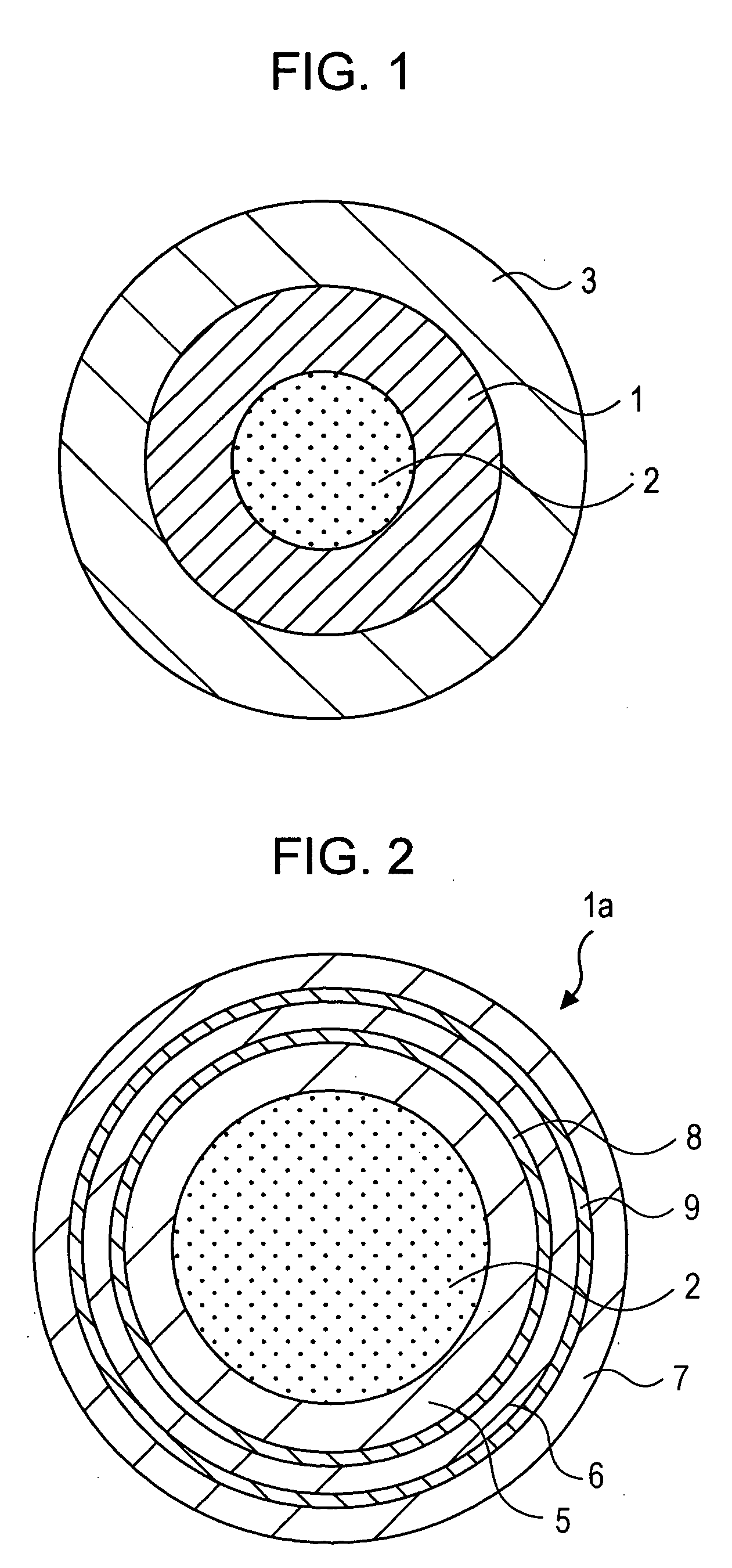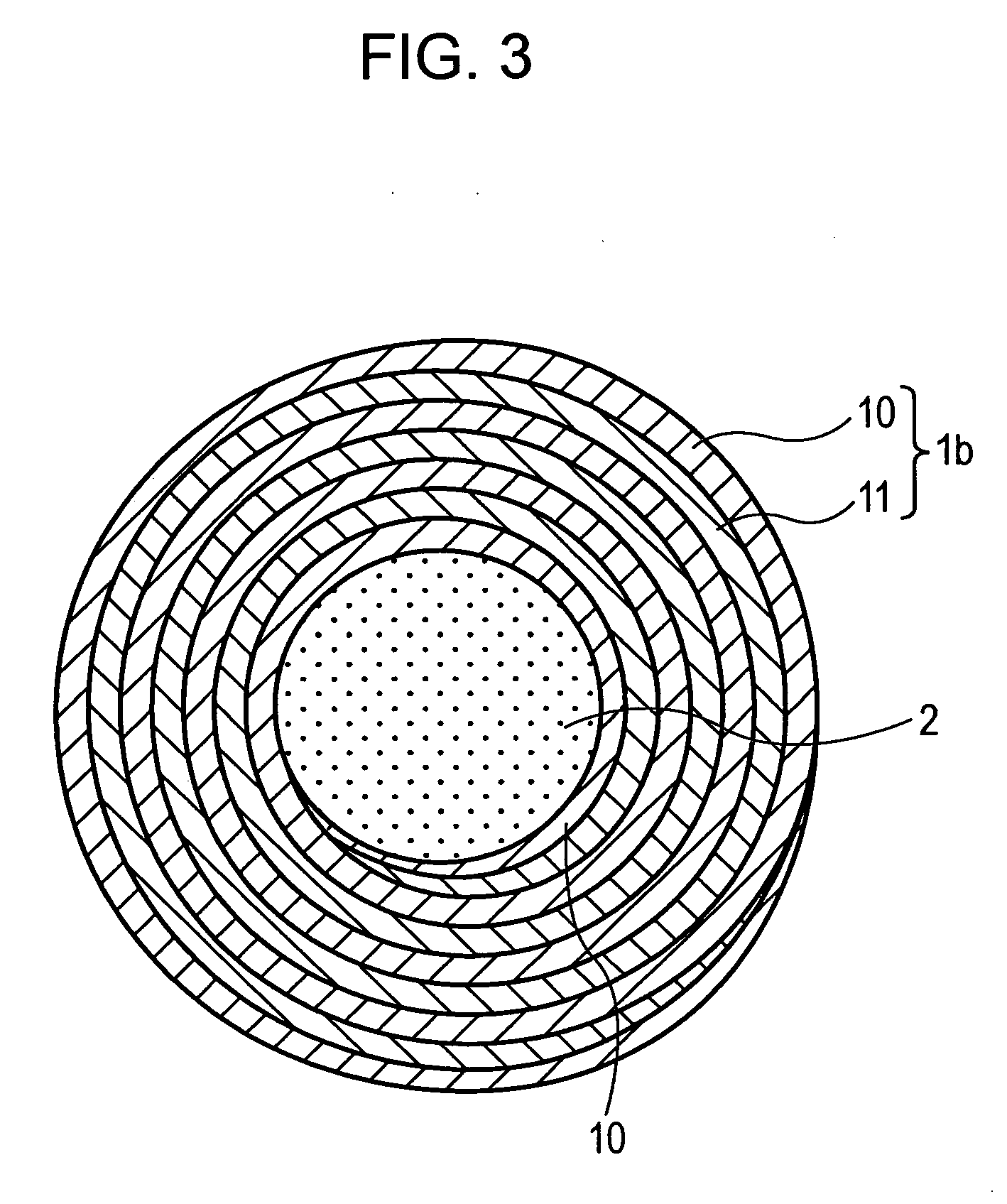Precursor of Nb3Sn Superconducting Wire Produced by Powder Process and Nb3Sn Superconducting Wire Produced by Powder Process
a superconducting wire and powder process technology, applied in the direction of superconducting magnets/coils, magnetic bodies, soldering apparatus, etc., can solve the problems of easy formation of brittle cu—sn compounds, poor properties in high magnetic fields, and small amount of nbsub>3/sub>sn phase, so as to facilitate the formation reaction of a nb3sn phase and reduce the amount of sn remaining in the core. ,
- Summary
- Abstract
- Description
- Claims
- Application Information
AI Technical Summary
Benefits of technology
Problems solved by technology
Method used
Image
Examples
example 1
[0050]Ta and Sn powders were weighed with an electronic balance in an Ar gas atmosphere in such a manner that Ta:Sn=6:5 (atomic ratio). The powders were mixed in a V-blender for 30 minutes. The resulting powder mixture was subjected to heat treatment at 950° C. for 10 hours in vacuum to form a Ta—Sn compound.
[0051]The resulting Ta—Sn compound was roughly crushed and then pulverized for 1 hour in an Ar atmosphere with an automatic mortar to form the Ta—Sn compound powder having a particle diameter of 75 μm or less. To the Ta—Sn compound powder, 25% by mass of a Sn powder and 5% by mass of a Cu powder were added. The mixture was mixed to form a material powder (Sn-based powder).
[0052]On the other hand, members (A) to (E) described below were stacked in sequence to form a composite sheath (see FIG. 2). The composite sheath was filled with the material powder. The composite sheath was further combined with an oxygen-free copper pipe having an outer diameter of 65 mm and an inner diamete...
example 2
[0055]Ta and Sn powders were weighed with an electronic balance in an Ar gas atmosphere in such a manner that Ta:Sn=6:5 (atomic ratio). The powders were mixed in a V-blender for 30 minutes. The resulting powder mixture was subjected to heat treatment at 950° C. for 10 hours in vacuum to form a Ta—Sn compound.
[0056]The resulting Ta—Sn compound was roughly crushed and then pulverized for 1 hour in an Ar atmosphere with an automatic mortar to form the Ta—Sn compound powder having a particle diameter of 75 μm or less. To the Ta—Sn compound powder, 25% by mass of a Sn powder and 5% by mass of a Cu powder were added. The mixture was mixed to form a material powder (Sn-based powder).
[0057]The resulting material powder was placed in a rubber mold and subjected to CIP at 200 MPa for 15 minutes to form a columnar formed article having an outer diameter of 32 mm and a length of 181 mm.
[0058]The resulting formed article was mechanically processed into a columnar formed article having an outer d...
PUM
| Property | Measurement | Unit |
|---|---|---|
| temperature | aaaaa | aaaaa |
| temperature | aaaaa | aaaaa |
| temperature | aaaaa | aaaaa |
Abstract
Description
Claims
Application Information
 Login to View More
Login to View More - R&D
- Intellectual Property
- Life Sciences
- Materials
- Tech Scout
- Unparalleled Data Quality
- Higher Quality Content
- 60% Fewer Hallucinations
Browse by: Latest US Patents, China's latest patents, Technical Efficacy Thesaurus, Application Domain, Technology Topic, Popular Technical Reports.
© 2025 PatSnap. All rights reserved.Legal|Privacy policy|Modern Slavery Act Transparency Statement|Sitemap|About US| Contact US: help@patsnap.com



